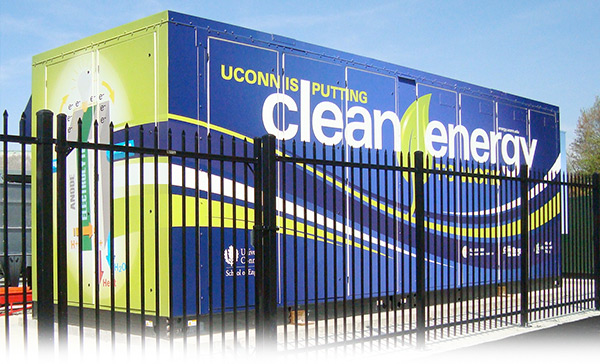|
|
 |
 From Connecticut to California, from UConn to Cal State San Marcos, colleges and universities are installing fuel cells to generate onsite energy cost savings while reducing their carbon footprint, water use and reliance on local utilities. From Connecticut to California, from UConn to Cal State San Marcos, colleges and universities are installing fuel cells to generate onsite energy cost savings while reducing their carbon footprint, water use and reliance on local utilities.
Fuel cells operate without combustion, so they are virtually pollution-free and, especially vital in drought-stricken California, conserve millions of gallons of H2O.
Download our case study to learn how your institution can benefit from fuel cell savings.
- At Cal State San Marcos, a 304-acre campus north of San Diego, Calif., stringent government sustainability goals are being met through the installation of two 440-kW fuel cells.
- At University of Connecticut, a 4,000-plus campus with an enrollment of nearly 18,500, one 440-kW fuel cell is providing critical power to research labs and offices. The results: 831 metric tons of CO2 are avoided annually, 1.5 million gallons of water are saved annually, and yearly NOx emissions reductions are the equivalent of removing 110 cars from the road.
- Overall, there is a growing acceptance of fuel cells, which create combined heat and power (CHP) power via a reaction between hydrogen and oxygen, have greater energy efficiency than turbines (powered by coal and other fossil fuels), are much quieter and take up very little space.
Additional resources:
|
 |
 |
| |
| |
|

 From Connecticut to California, from UConn to Cal State San Marcos, colleges and universities are installing fuel cells to generate onsite energy cost savings while reducing their carbon footprint, water use and reliance on local utilities.
From Connecticut to California, from UConn to Cal State San Marcos, colleges and universities are installing fuel cells to generate onsite energy cost savings while reducing their carbon footprint, water use and reliance on local utilities.

![[image] University Business logo](http://www3.universitybusiness.com/mailing/logos/ublogoNEW.png)